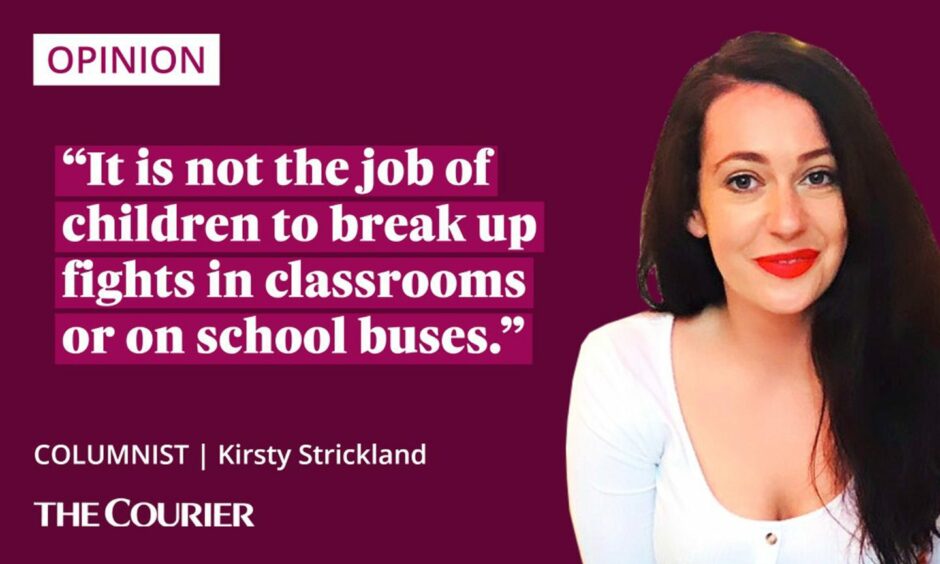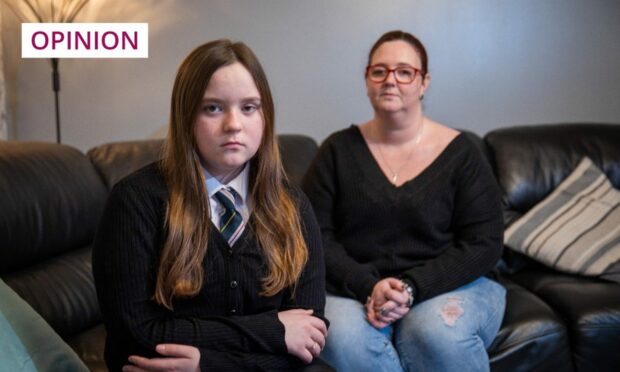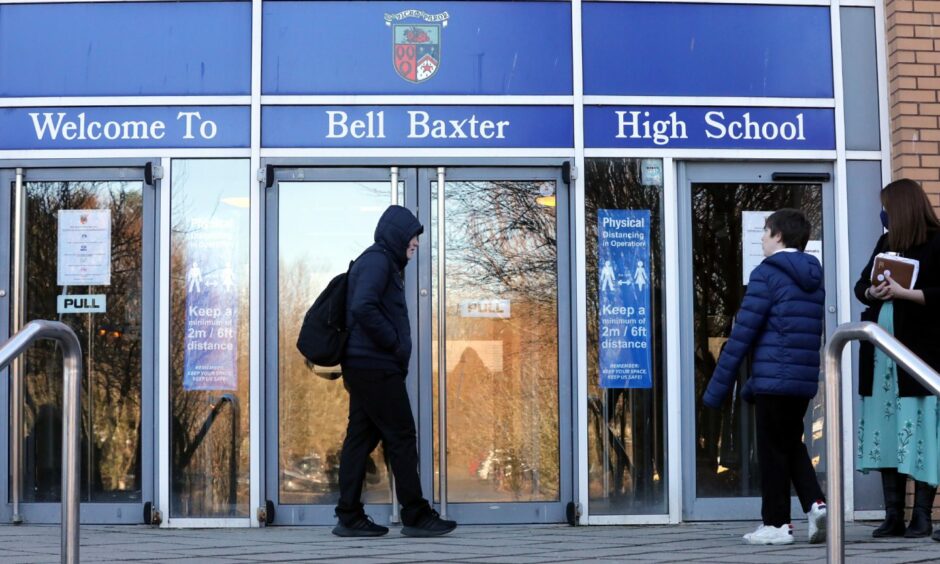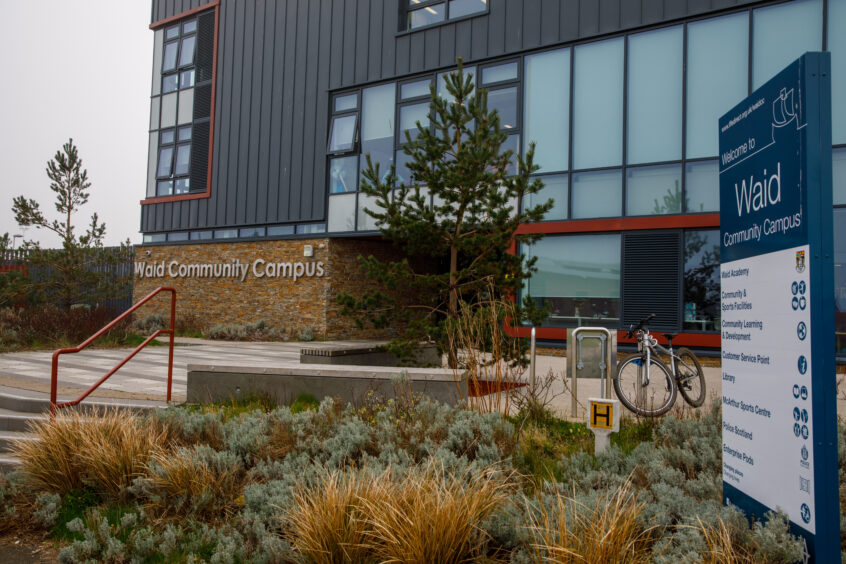The video of a schoolgirl being assaulted at Waid Academy which did the rounds last week is one of the most disturbing things I have ever seen.
It prompted questions about how bullying and violence is dealt with in Scottish schools.
And then another video emerged, this time of a girl being attacked on a school bus.
Filmed by a fellow pupil, it showed a Bell Baxter High School student being repeatedly hit and kicked by two girls.
The victim of that assault, 12-year-old Kaylynn Donald, has since spoken to The Courier about her experience.
I was awed by her bravery when I read her interview last week.

Bullying and physical violence in schools is nothing new.
But that doesn’t mean we should accept either as an inevitable part of the school experience.
We should want better for our young people.
Reasons why children stand by as school bullying happens
I shudder when I think back to how some of my classmates were treated during high school in the noughties.
Being the target of bullying is not just a humiliating, frightening experience – it is a profoundly lonely one too.
There are girls whose faces I can remember and whose names I do not. Poor souls who were always the butt of the joke and the target of cruel jibes.
Friday’s Courier is inspired by the bravery of Fife schoolgirl Kaylynn Donald, 12, who has spoken out on the impact of bullying. pic.twitter.com/GDeSi4nzW1
— David Clegg (@davieclegg) January 26, 2023
Our school had its fair share of fights and assaults too.
Over the last few weeks some have questioned how so many children could stand by and watch their classmates being attacked without doing anything to help.
I can think of a few reasons.
They might be scared of reprisals.
They might be paralysed by shock.
Maybe they just don’t know what to do.
I stood up to school bullying – and paid the price
I intervened once, during an incident on the school bus when I was in high school.
One of my classmates – a boy – was hassling a girl from our year, who I had known since primary school.
Words were exchanged, taunts were delivered and to be honest, I can’t remember what any of them were.
What I do remember, as clearly as though it was yesterday, is the moment he spat in her face.
It’s such a disgusting thing to do to somebody.
An argument broke out, which soon escalated into a tussle.
The tussle became a fight and the fight ended with him pushing me hard in the chest.
I fell off the seat and onto the floor.
There was a blinding pain in my arm, which I would later learn was a broken wrist.
When I got home I told my mum that the injury had happened during a playful “tickle fight” on the bus, because I was scared of getting a row.
EXCLUSIVE by @JenniferMHale: 70 social media accounts dedicated to school violence and #bullying in #Tayside and #Fife https://t.co/arNXHReDfO
— Michael Alexander (@C_MAlexander) January 21, 2023
But the school knew what really happened.
The boy and I were given the same punishment – a one-week ban from the school bus.
The girl who was spat on wasn’t offered any support, as far as I know.
Bullying is for staff to tackle, not pupils
When we talk about these incidents in Scottish schools today, we should be careful that we are not passing on to children what should be adult responsibilities.
It is not the job of children to break up fights in classrooms or on school buses.
They shouldn’t have to intervene in violent situations or de-escalate them when they occur.
It is now common practice for schools to have an anti-bullying policy.
It is the job of teachers and support staff in that school to enforce it, and to evaluate it regularly to ensure it is fit for purpose.
The experiences of school pupils should inform best practice.
Their safety and well-being is paramount.
For too many kids, school is a battleground that they dread navigating each day.
They deserve better.













Conversation